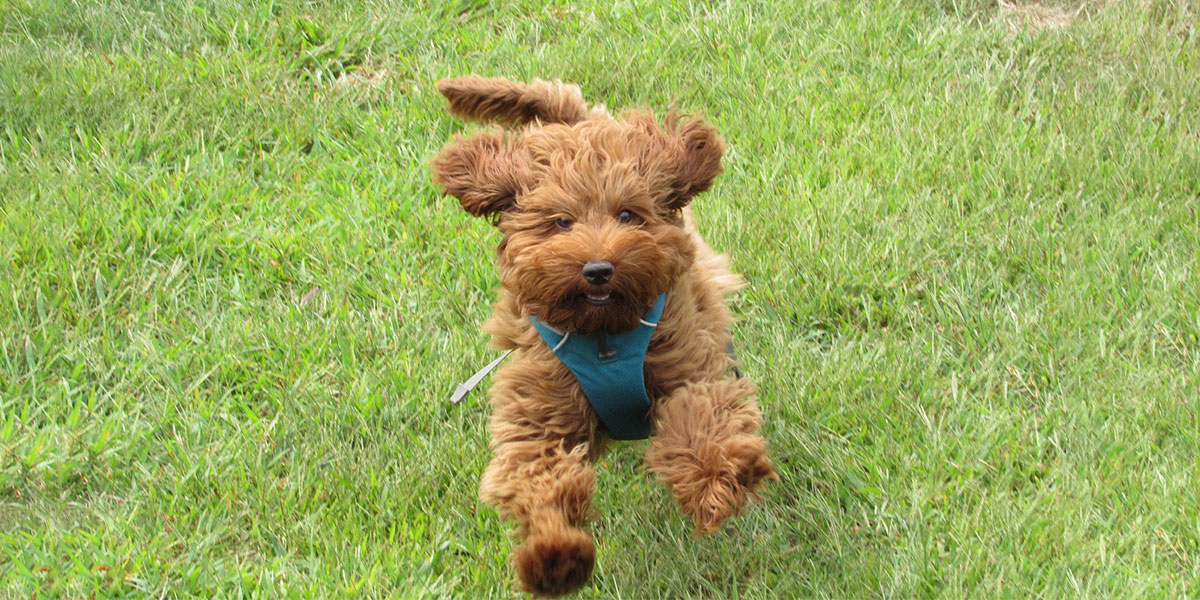Taking too long? Close loading screen.

April 29th
If you’ve just found the perfect puppy, you might be tempted to rush them home as soon as possible. But before you bring your new dog home, you’re going to want to make sure you’re home is set up for housetraining.
That’s because housetraining should start as soon as your puppy walks in the door. This will help them build good habits and quickly learn where they should go to the bathroom. Your puppy will be happier, and you’ll save yourself quite the mess.
Here, we’ll show you what you’ll need to get your home ready for housetraining.
A crate is one of the most important pieces of equipment for housetraining your dog. They will learn to rest in the crate without going to the bathroom, teaching them that they should relieve themselves only when they are outdoors.
You’ll want to invest in a durable, collapsible crate that can be moved around. That’s because you should experiment with different crate locations throughout the house to find one that’s best for your puppy.
Most owners will want to choose a wire crate that their dog can see through. This will keep your puppy from feeling lonely and abandoned.
However, there are some cases where you might want to choose a solid crate. This is a good option for dogs that are very sensitive and want a sheltered area where they can rest.
And you can also move the crate around so that they puppy can spend time in it when they are in different rooms. This is a great way of getting your dog used to the crate without making them feel lonely.
How Large Of A Crate Should You Get?
Many people think that getting a large crate will be better for their dog and make them feel more relaxed. However, you’ll want to choose a crate that isn’t too big.
That’s because dogs will often use larger crates as a bathroom, the last thing that you want when you are housetraining your dog. Instead, choose a crate that is small enough that your dog won’t want to relieve themselves where they sleep.
You should pick a crate that gives your dog enough room to lie down and stretch out. Because your dog will grow, this means that you may have to get multiple crates throughout their life. While this may be inconvenient, it will make it much easier to housetrain your dog.
You’ll also want to make sure that you have a dedicated space where your puppy can play. Even the most well behaved puppy will still sometimes go to the bathroom inside. That’s why you’ll want to have an indoor area where your dog can relieved themselves.
This will keep your dog from going to the bathroom in other areas throughout your house. And it gives you a place where you can leave your dog for short periods without having to put them in their crate.
If you don’t have a separate room that you can use, you can gate off an area to make a puppy play room. You’ll want to choose an area that is easy to clean up, such as a kitchen or bathroom with tile.
What You’ll Need In The Crate
Here’s what you’ll need to get started with your puppy playroom:
When you’re making the toilet, you’ll want to make it feel like the area outside where your dog will eventually go to the bathroom. If your dog will use grass, you should cover a litter box or metal tray with grass or turf. And if you live in the city, you can use small concrete tiles.
Once you bring your new dog home, it’s important that you begin the housetraining process right away. That’s because puppy’s can quickly pick up bad habits.
Introduce Your Dog To Their New Crate
Your puppy’s crate will be an important part of their housetraining, so you’ll want to make sure they get used to it as soon as possible.
When your dog gets home, show them that the crate is a safe, comfortable place. Make sure it has plenty of toys and a cozy bed so that your puppy feels at home. This will show your puppy that they don’t have to fear the crate, and will make it easier to use it for housetraining.
If your dog has any issues with the crate, try to slowly lure them in with some treats. Once they are in the crate, pet them and give them compliments, leaving the crate door open.
Once they seem comfortable, you can close the door. However, you may want to stay in the room for a while and see how they respond. Slowly increase the time they are in the crate with the door closed.
This process may seem slow, but it’s a great way of gradually increasing your puppy’s comfort level with their crate. And it will make the housetraining process go much more smoothly.
Move The Crate Around The House
And you should move around the crate to different areas of the house. This will allow your puppy to spend more time in the crate, without feeling like they are being abandoned.
You can also use this as a way to test which area is best for the crate. Some puppies are very sensitive, and will prefer a crate location that is in a less active part of the house.
And if you’re still looking for that perfect pup, head over to our puppy finder. We have a wide range of puppies, from cockapoos to labradoodles. And all of our puppies come with a 10 year health guarantee.
Find the Perfect Puppy